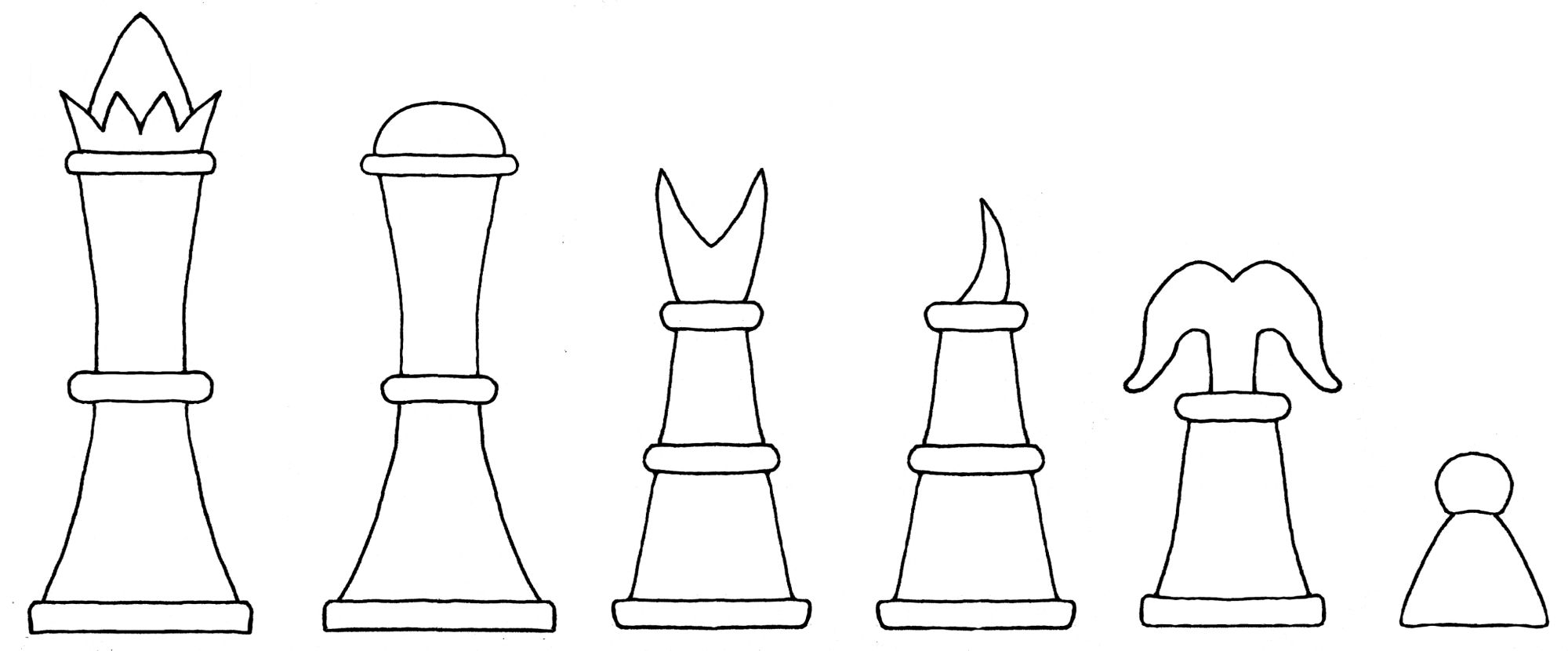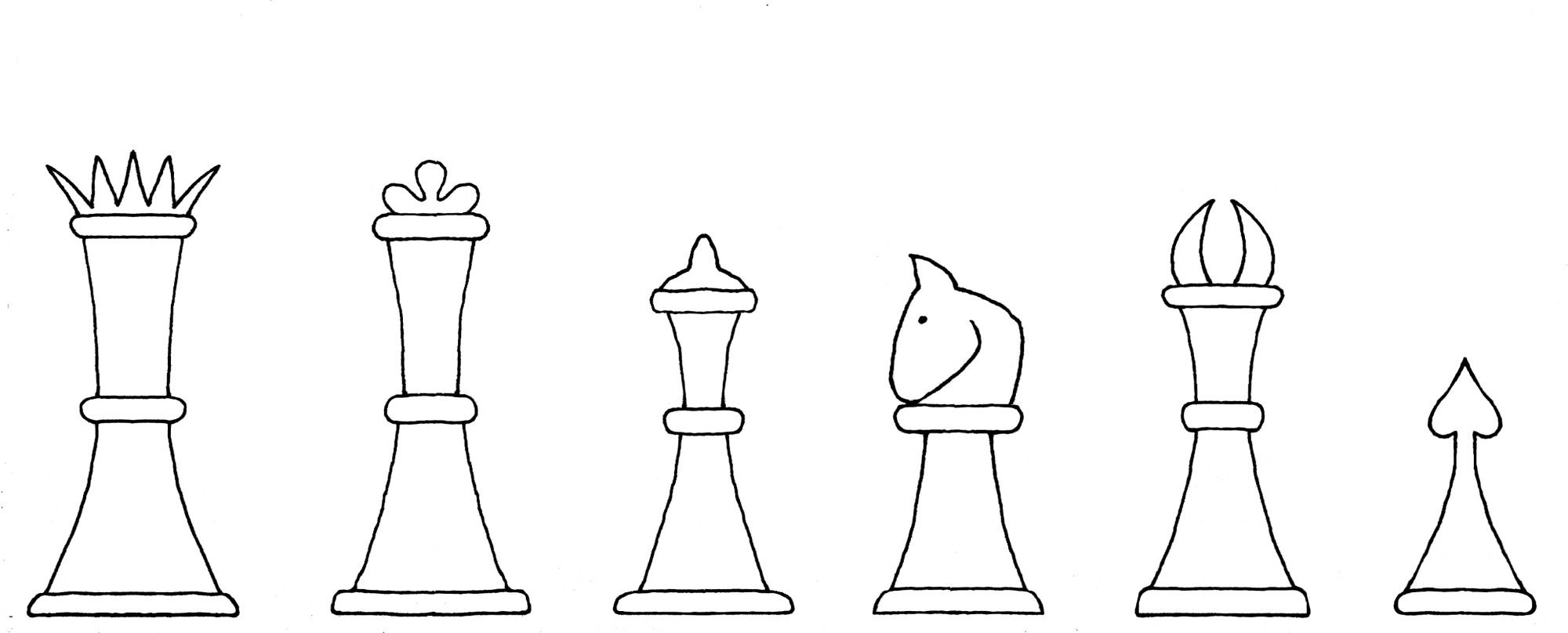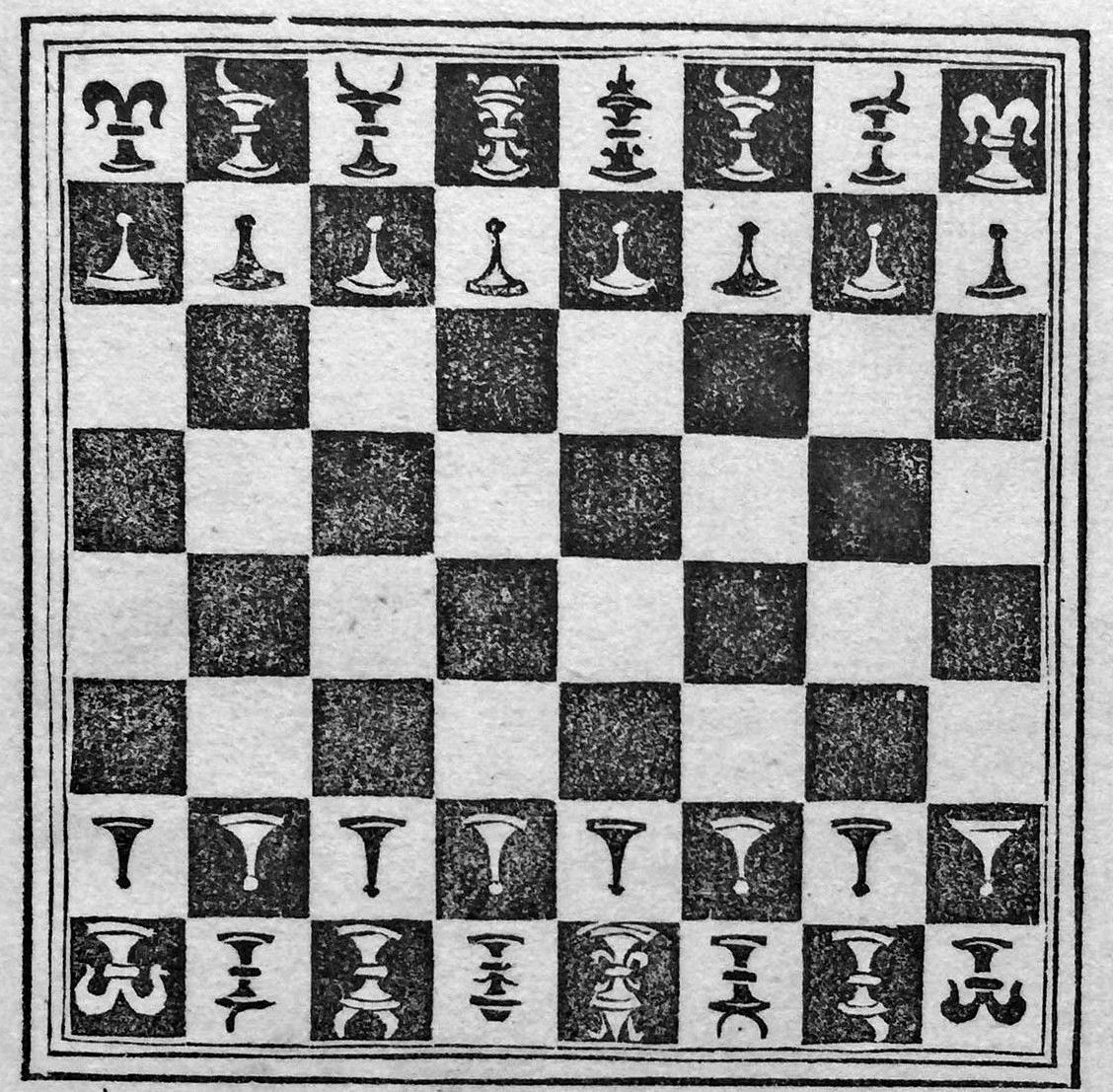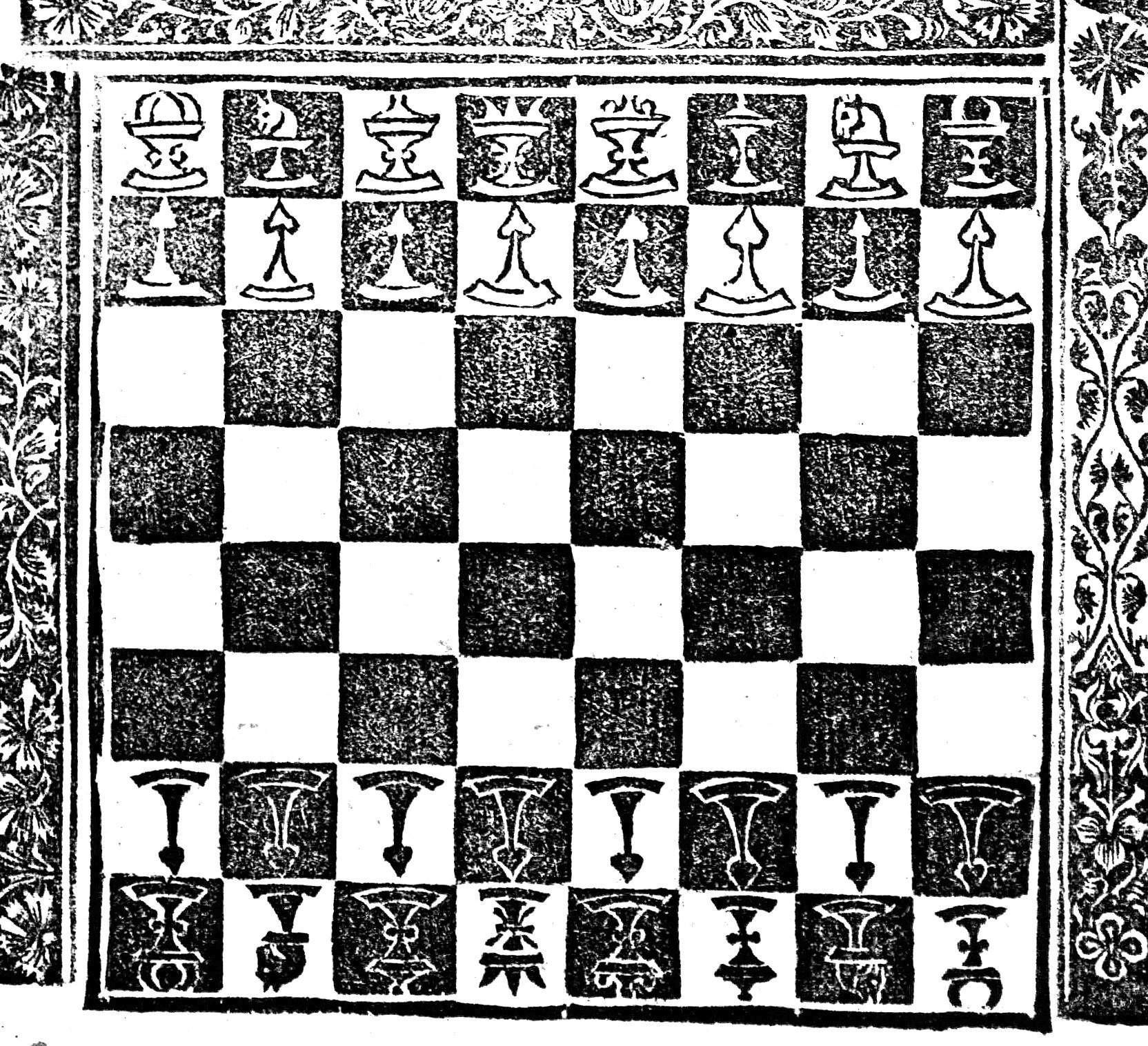The Publicius and Lucena chess sets of the late fifteenth century
The chess set of Jacobus Publicius

Jacobus Publicius, in his Ars oratoria, Ars epistolandi, Ars memorativa, published by Erhard Ratdolt in Venice in 1482, illustrated a chess set that showed remarkable similarity to that published by Konrad von Ammenhausen in his Schachzabelbuch, written in 1337. This itself was a translation into a Middle High German verse of the then unpublished sermons by Jacobus de Cessolis (c.1250 to c.1322) (see Chess sets of the fourteenth century).
The king, queen, bishop and knight all have a waisted pedestal with a central raised band. The rook has a simple tapering pedestal, lower in height. On top of his pedestal the king has an impressive crown with a central point; the queen a rounded dome for a crown on hers. The bishop has two curved points reaching upwards, harking back to its elephant origins, and the rook has the curved points that symbolise the poles of the original chariot. The knight has a single curved point, similar to one of the bishop’s ‘tusks’. Here though, it is representing the single feather in the side of an armoured knight's helmet while on horseback. This innovation, which began in the fourteenth century, persists as asymmetry in the knight’s form in some sets until the nineteenth century, in place of the horse's head on a pedestal. Pawns taper from the base to a terminal ball.

The chess set of Luis Ramerez de Lucena
Lucena, author of Repetición de Amores y Arte de Ajedrez con 101 Juegos de Partido (Repetition of Loves and Art of Chess with 101 Match Games), published in Salamanca around 1497, was one of the first to illustrate a chess set with a life-like carved horse’s head on a pedestal as the form of the knight.
The chess set has similarities to the Publicius set (above) in that the king, queen, bishop, knight and rook all have pedestals, upon which the king and queen have crowns. The bishop, however, has, quite possibly, a cardinal’s hat. The rook has two upward pointing curved points, not unlike the Publicius bishop. All but the knight have waisted pedestals with a central raised band. That of the knight is simply tapered from the base and is lower. Pawns taper from the base to a heart shape point at the top.




